What is Cervical Cancer?
In India, cervical cancer contributes to approximately 6-29% of all cancers in women. Cervical cancer occurs in approximately 1 in 53 Indian women during their lifetime compared with 1 in 100 women in more developed regions of the world. Cervical cancer is a condition in which cancer cells appear in the cervix, which connects the uterus to the vagina. Cervical cancer usually takes a long time to develop. During this time, the cells in the cervix convert and grow rapidly. Cervical cancer generally develops very slowly, starting as a pre-cancerous condition called dysplasia. Dysplasia can be detected by a Pap smear. This is why it is so important for women to get regular Pap smears. Undetected, pre-cancerous changes can develop into cervical cancer and spread to the lungs, liver, bladder, and intestines. It can take a long time for pre-cancerous changes into cervical cancer.
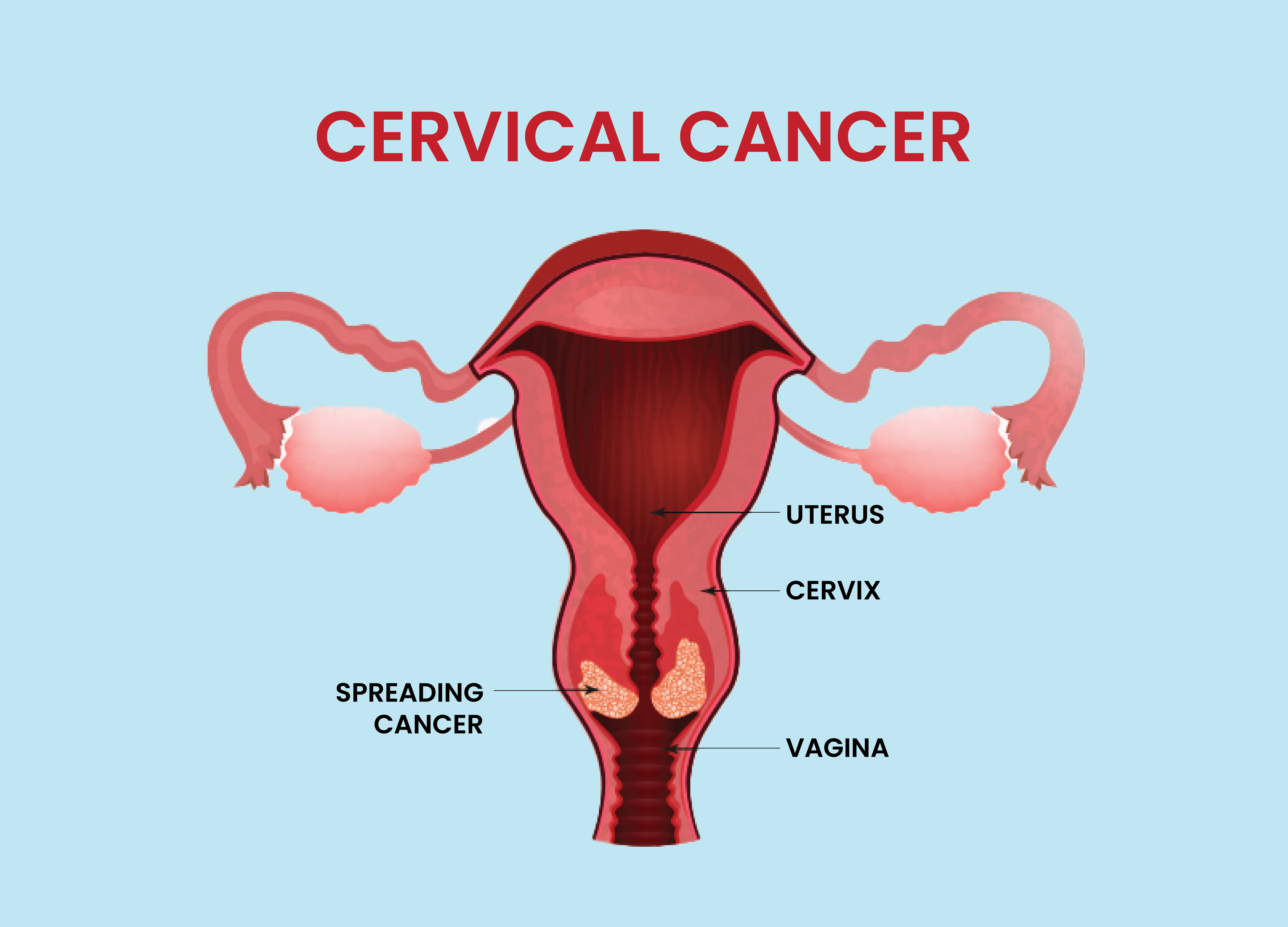
Types of Cervical Cancer?
Cervical cancer is categorized based on the type of cell where it occurs. The most common types of cervical cancer are:
What are the Causes of Cervical Cancer?
Cervical cancer is categorized based on the type of cell where it occurs. The most common types of cervical cancer are:
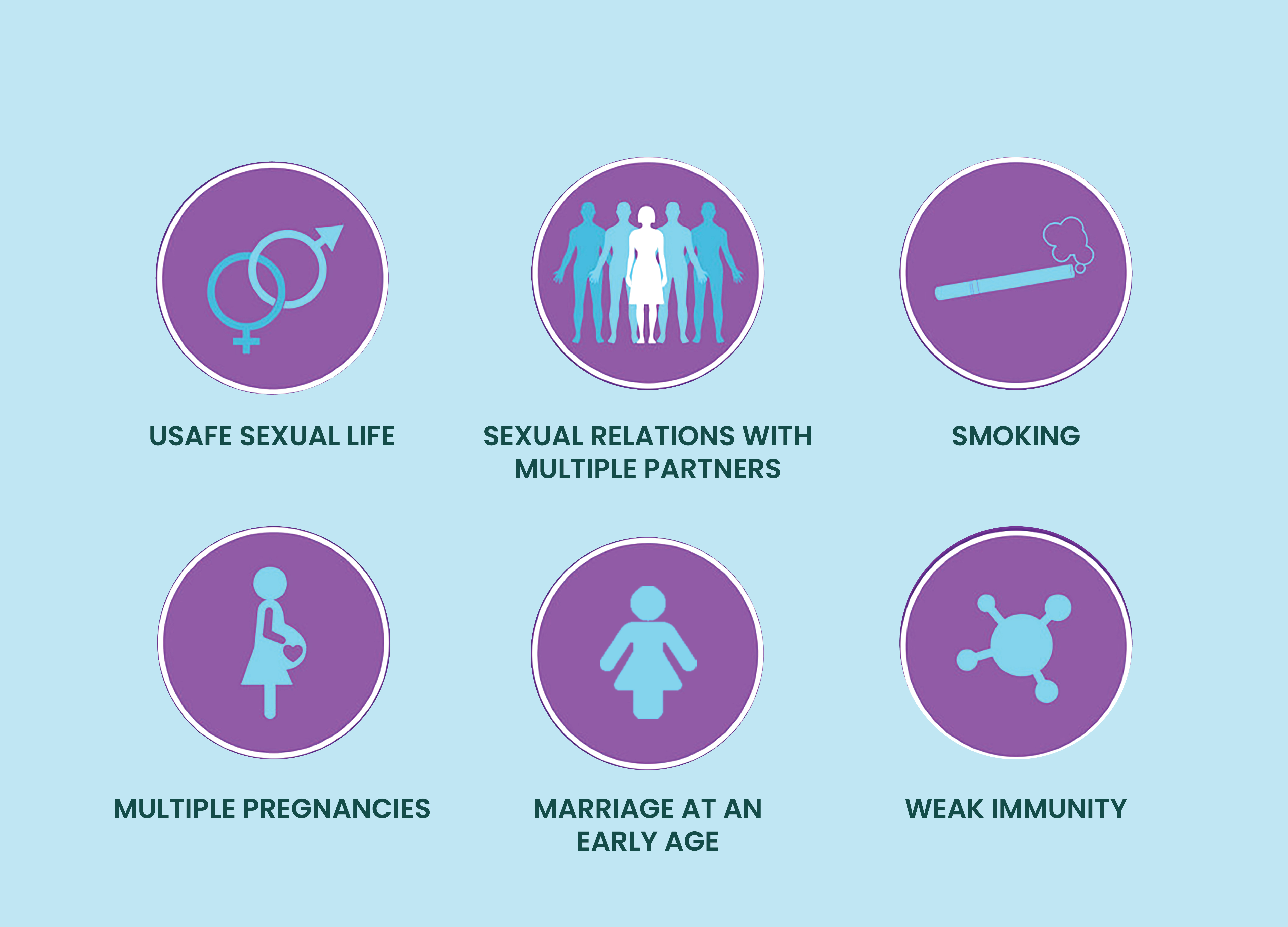
What are the Risk Factor of Cervical Cancer?
The risk of developing cervical cancer is directly associated with the risk of contracting HPV.
What are the Signs & symptoms of Cervical Cancer?
In its initial stages, cervical cancer normally does not have symptoms. That is why regular Pap tests are so important, particularly for sexually active women.
Signs and symptoms of cervical cancer include:
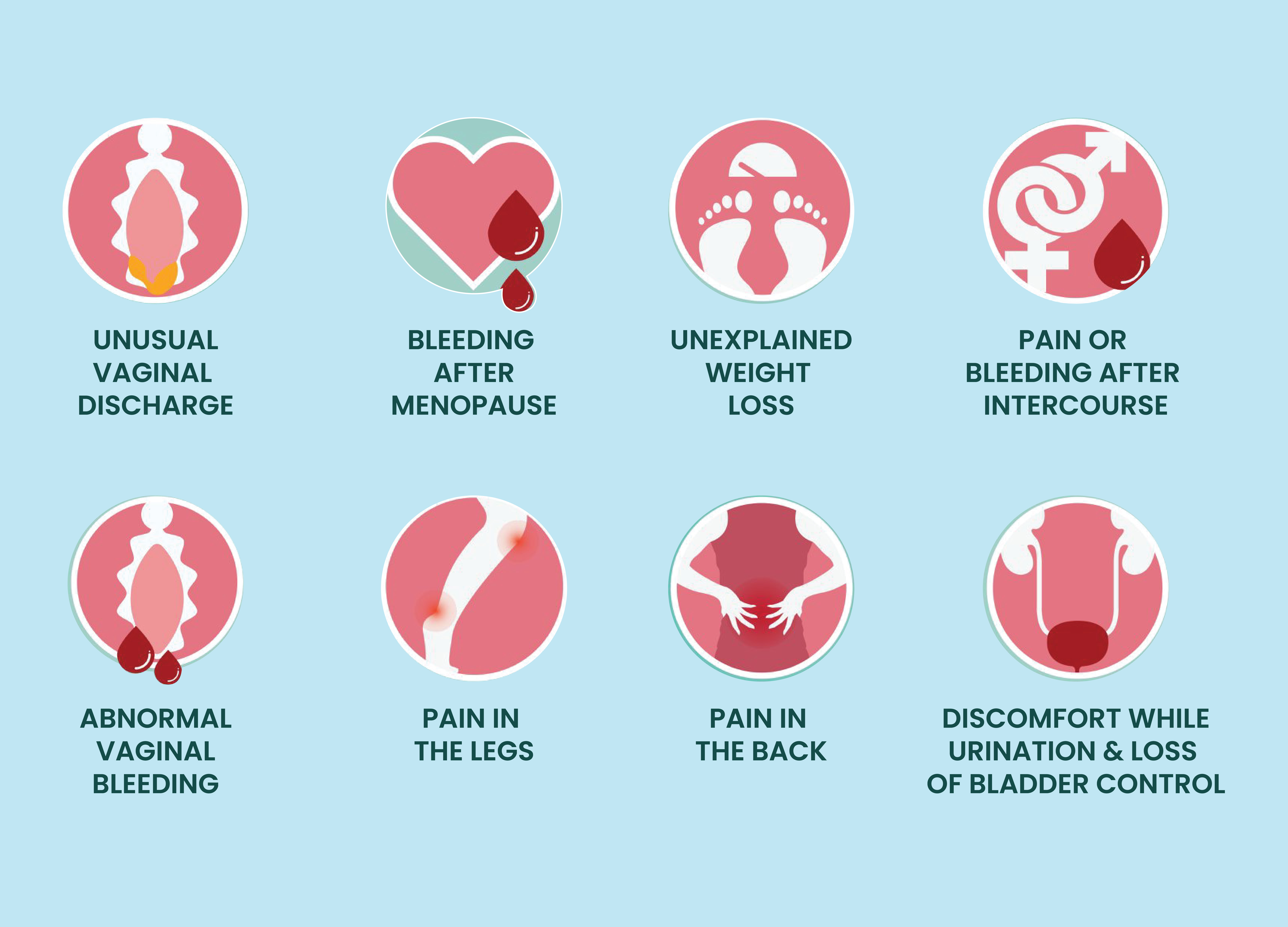
How to Diagnose Cervical Cancer?
Cervical cancer is one of the most successfully treatable forms of cancer, as long as it is detected early and managed effectively. Ifcervical canceris diagnosed inlater stages, it can be controlled with appropriate treatment and palliative care.
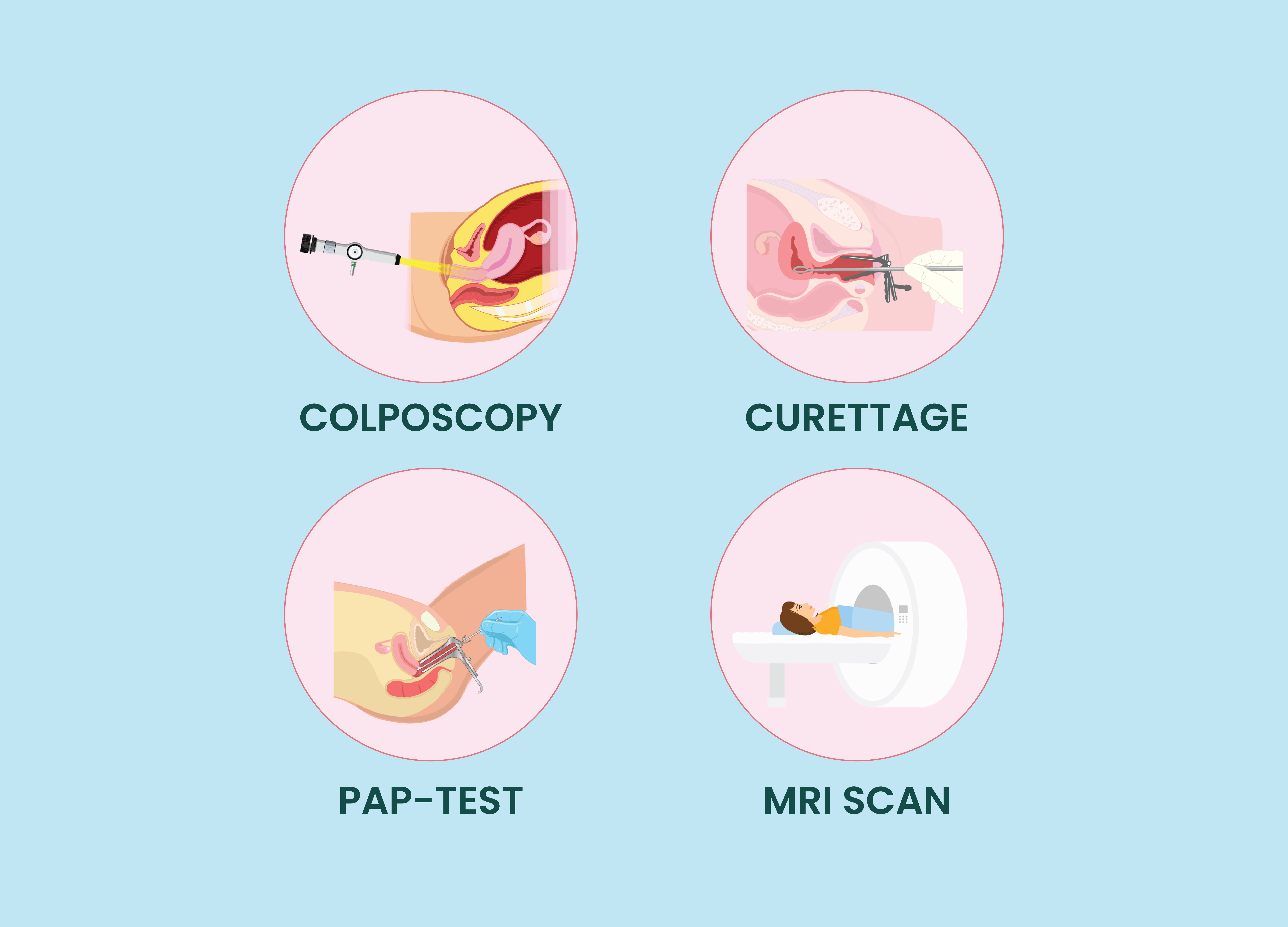
MANAGEMENT
Management of cervical cancer depends on the stage, patient co-morbidities, lymph node involvement, and risk factors for recurrence. Treatment may include surgery, Cone biopsy, Trachelectomy, chemotherapy, and radiation therapy.
Signs and symptoms of cervical cancer include:
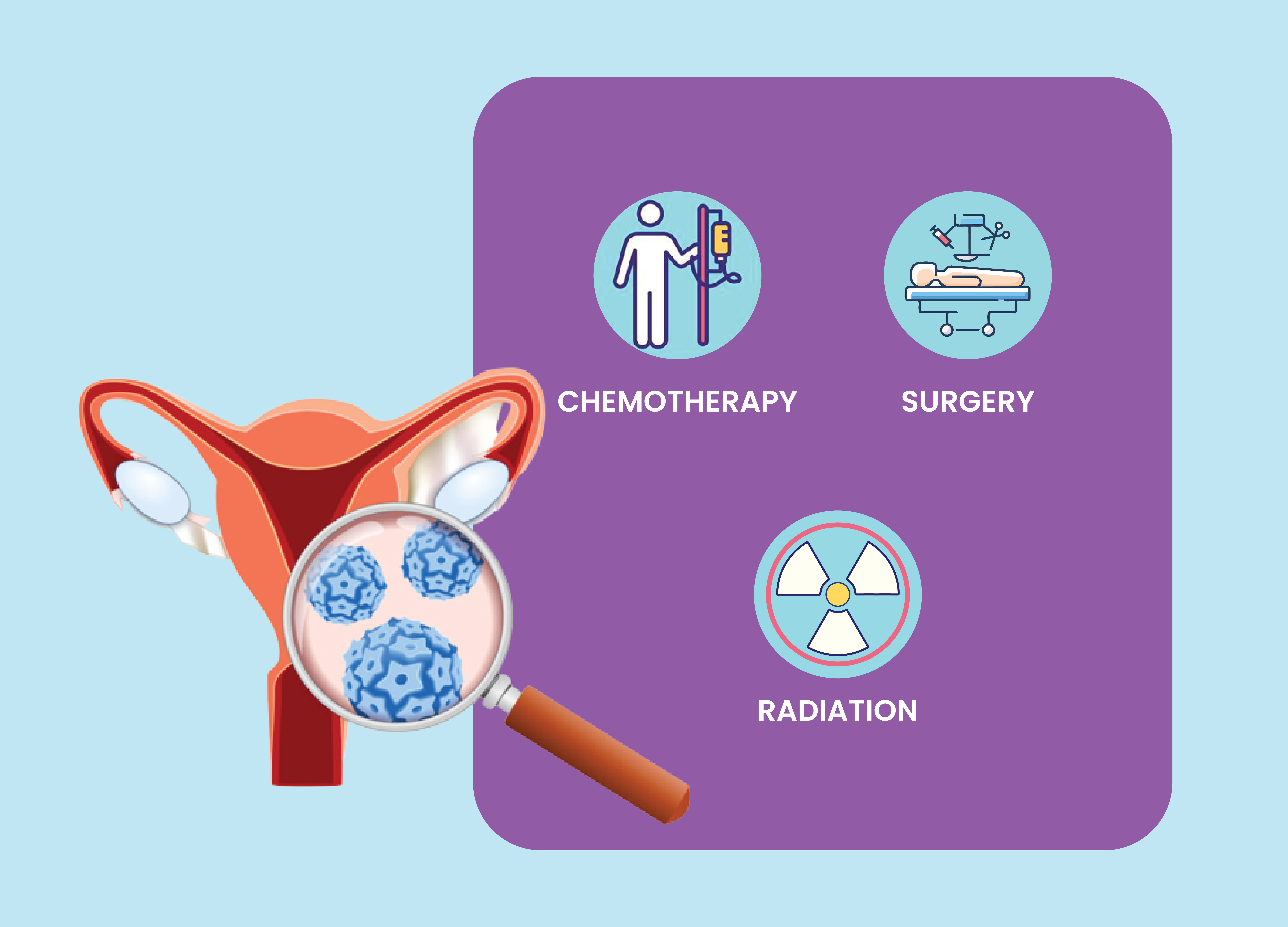
FOLLOW UP
• In patients with higher-risk cervical cancers, clinical follow-up may be performed every 3 months for the first 2 years, every 6 months for years 3 through 5, and then annually.
• For patients with low-risk cervical cancer, clinical assessment is less frequent and may be performed every 6 months for the first 2 years, and then annually.
Busting myths about cervical cancer
Having a single partner, or not having sexual encounters for a long time, saves me from the hassle of a Pap test
Any woman with a cervix that has ever had any sexual activity no matter how many times, is at the risk of cervical cancer. Even if you had sex a long time ago, the virus can still stay in the system so you should continue taking a PAP tests, which is repeated every 3 years.
Only older women suffer from cervical cancer
Cervical cancer doesn’t discriminate by age. Women of all ages who have had sex are at risk of developing the disease.
Smoking and other factors increase the risk of cervical cancer
Women who smoke are about twice as likely as non-smokers to get cervical cancer. Smoking weakens your immune system, making it more difficult for your body to fight HPV infections on its own.
HPV infection clears up on its own
Most people clear the HPV infection without ever knowing they were exposed. However, in some people, the infection persists and can lead to serious health problems, such as genital warts and several types of cancer, including cervical cancer.
It is not possible to prevent cervical cancer
Cervical cancer is among the most preventable cancers. A simple pap smear test can help determine any kind of changes in the cells of the cervix and when any such change is detected, it is possible to start treatment early and prevent cancer from developing.




